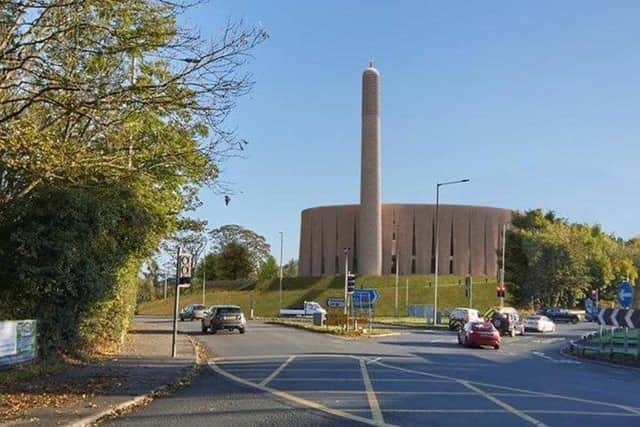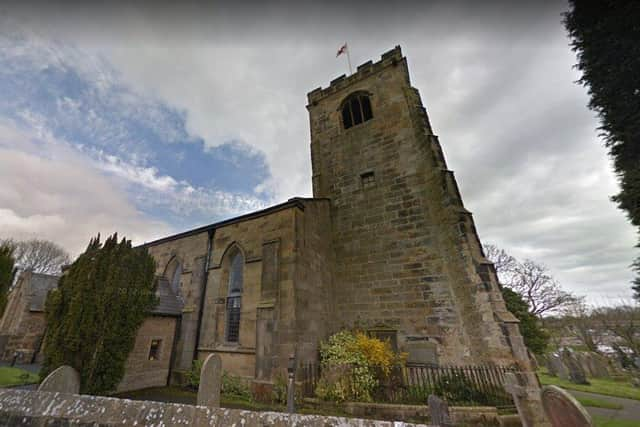Preston's Brick Veil Mosque: Perfect fit for the city or out of place?
and live on Freeview channel 276
It came during an ongoing public inquiry which will help determine whether the Brick Veil Mosque will be allowed to be built in its planned location on land alongside the Broughton roundabout.
Claims were also made that there was inadequate public consultation over the appearance of the three-storey, 12-metre high building and its accompanying 30-metre tall minaret.
Advertisement
Hide AdAdvertisement
Hide AdHowever, those involved in selecting the blueprint for the landmark place of worship said that the global search undertaken for suggested designs had secured a high quality structure that the city could be proud of.


One of the reasons that Preston City Council gave the go-ahead to the scheme earlier this year - in spite of it being contrary to some elements of local planning policy, because it sits in an area designated as open countryside - was that the style of the building referenced the city’s cotton industry heritage.
The entire scheme was considered to be a “contemporary interpretation of the classic cotton mill”, according to a report presented to the authority’s planning committee in February. The minaret, in particular, was purported to have the appearance of a Victorian mill chimney.
However, it was that feature that proved a point of contention at the inquiry. Rob Burns, a heritage consultant appearing as a witness for Broughton Parish Council - which objects to the plans - said that the designers had made “no distinction between the industrial history of Preston and its rural hinterland”.
Advertisement
Hide AdAdvertisement
Hide Ad

“The proposal does not celebrate local history, but is based on a poorly understood assumption that a mill chimney would be an appropriate response.to this rural context,” Mr. Burns said.
The parish council’s advocate at the inquiry, Peter Black, added that while cotton mills with steam-powered chimneys were a “characteristic feature of the Victorian town of Preston”, Broughton was an “isolated rural village”.
However, Melanie Morris, the heritage witness for the applicant, Cassidy + Ashton, said that she regarded the feature as more of a “regional marker”.
“I wouldn't expect to find it in Broughton, but I'm not sure…whether that matters, because [the mosque would be] a regional landmark - it’s a building which you’re seeing from the motorway.”
Advertisement
Hide AdAdvertisement
Hide AdAcross two days of discussion about the appearance and surroundings of the mosque last Thursday and Friday, the inquiry also heard from one of the experts who evaluated the 213 entries to the Royal Institute of British Architects (RIBA)-run competition to design the building.
London-based architect Jonathan Carter, who has worked in the profession for over 35 years, said that the winning pitch - which came from architectural practice Luca Poian Forms - had stood out amid a strong field as “a really smart idea”.
Asked by the barrister for the applicant why the minaret - which will not have the traditional function of facilitating the call to prayer - could not have been made smaller, he said that the “juxtaposition” of the tower with the oval shape of the building was “crucial” to its success.
“[The location] is quite a harsh environment and, for me, it needs a bold response. If you water it all down, you’re going to lose a lot of the quality of what has been designed,” Mr. Carter said.
Advertisement
Hide AdAdvertisement
Hide AdPeter Black pressed him on whether it might have been “a good idea” if Broughton residents and their representatives on the parish council had been involved in adjudicating the competition seeing that it was they who would have to “live with it” afterwards.
However, Mr. Carter said that while design was always “subjective”, he believed that an “exceptional” one had been chosen for its location and he hoped that it would be welcomed - noting also that the competition panel contained members with Preston connections, including the Preston Historical Society chair, Aidan Turner-Bishop.
The inquiry heard that Cassidy + Ashton had attempted to initiate a pre-application consultation process in February 2021, but that the city council had been unable to facilitate it as a result of Covid restrictions in place at the time.
He added that in April last year, the firm had spoken to the parish council about its then embryonic plans and had offered to continue to engage with the authority - but he claimed that he was “never asked” for any further meetings.
Advertisement
Hide AdAdvertisement
Hide AdMr. Cassidy said that an exhibition of the designs had later been laid on at a local venue for between 70 and 80 “members of the potential users of [the] facility” in order for them to give their input about some of the practical aspects of the project
Mr. Black responded:that potential users were “not the same as the local community”.
He added: “You put on an exhibition and discussed designs with the Muslim community, which is great… but you didn't afford the same opportunity to other residents.”
Alban Cassidy insisted that the people who were going to be experiencing the facility on a day-to-day basis were the “right people” to ask - and stressed that many of them lived within the Broughton parish area.
Advertisement
Hide AdAdvertisement
Hide AdMeanwhile, there was also debate about whether the final design should have been referred to an independent organisation to undergo a review process, as encouraged by a Central Lancashire-wide planning policy intended to ensure “high standards of design” on major projects.
Christiaan Zwart, the barrister for the applicant, said that if a proposal could already be shown to be of such a standard, then there was “no need” for a review. The mechanism is one that can be initiated either by the local authority or those behind an individual application.
However, Rob Burns said that Mr. Zwart's approach would be to pre-empt the process - “You're saying, ‘We think the design is of a high quality, therefore there is no requirement to send it out for design review’.”
Alban Cassidy insisted that the competition evaluation was itself a “grander” affair than such a review in any case.
Advertisement
Hide Ad